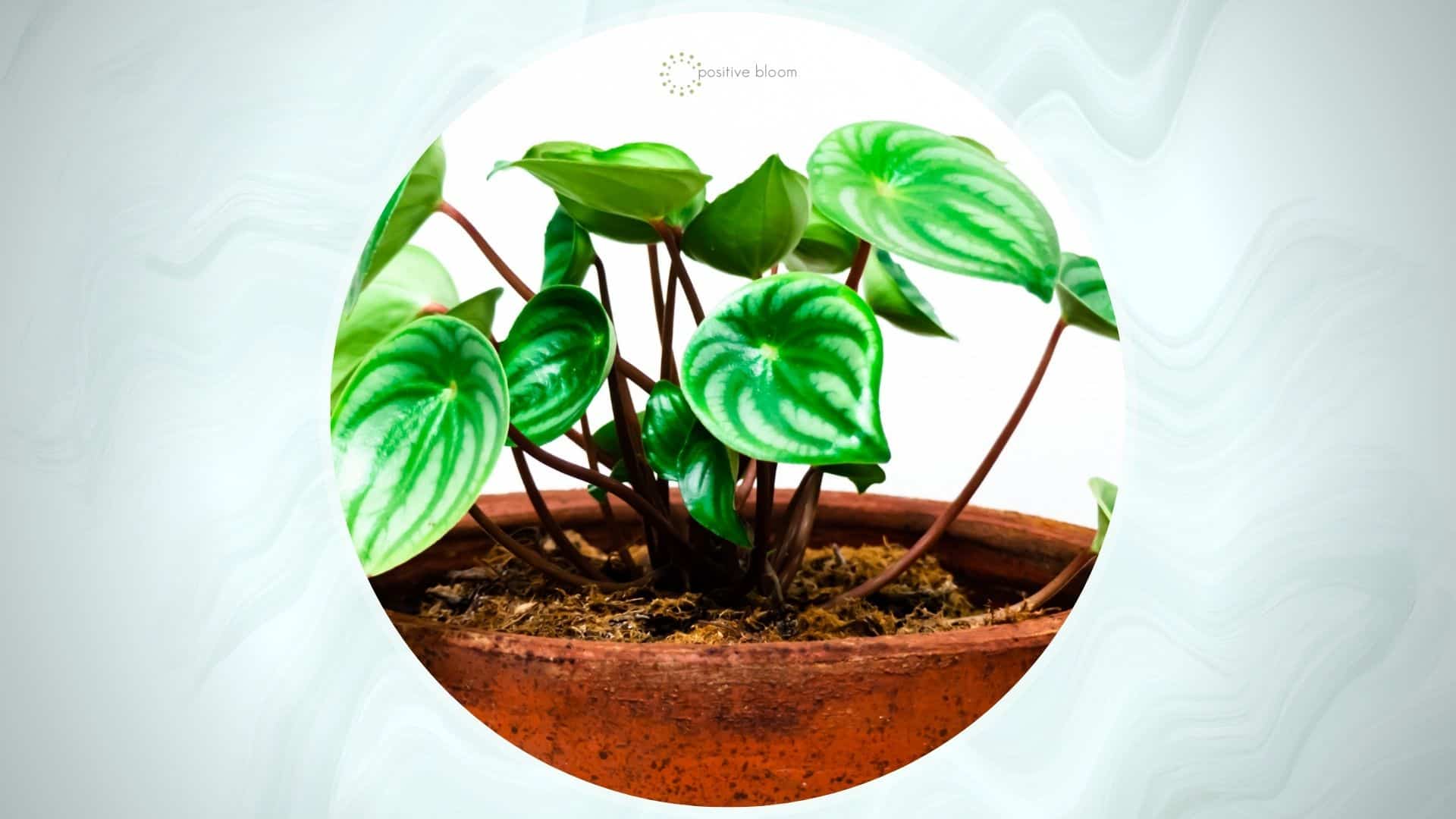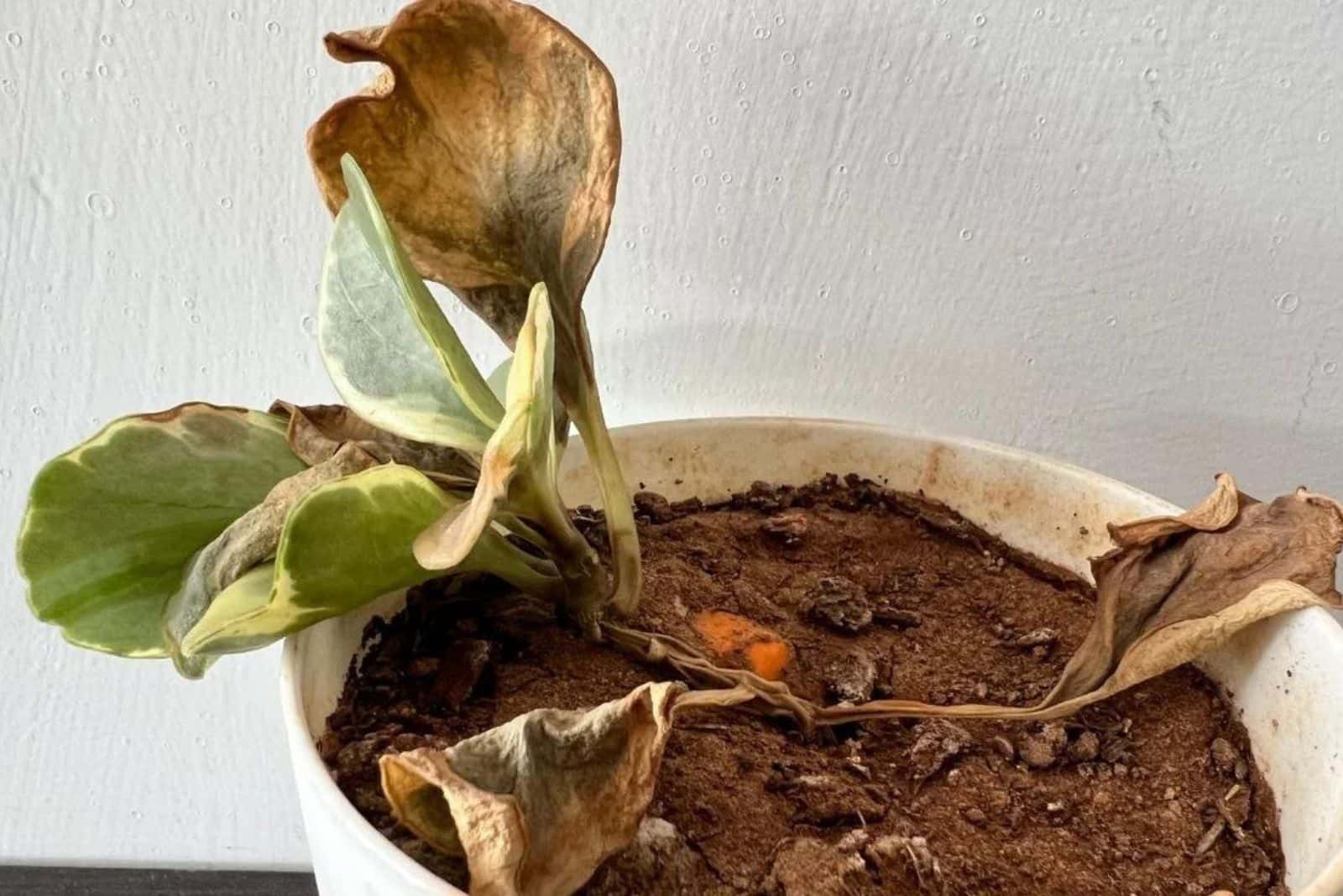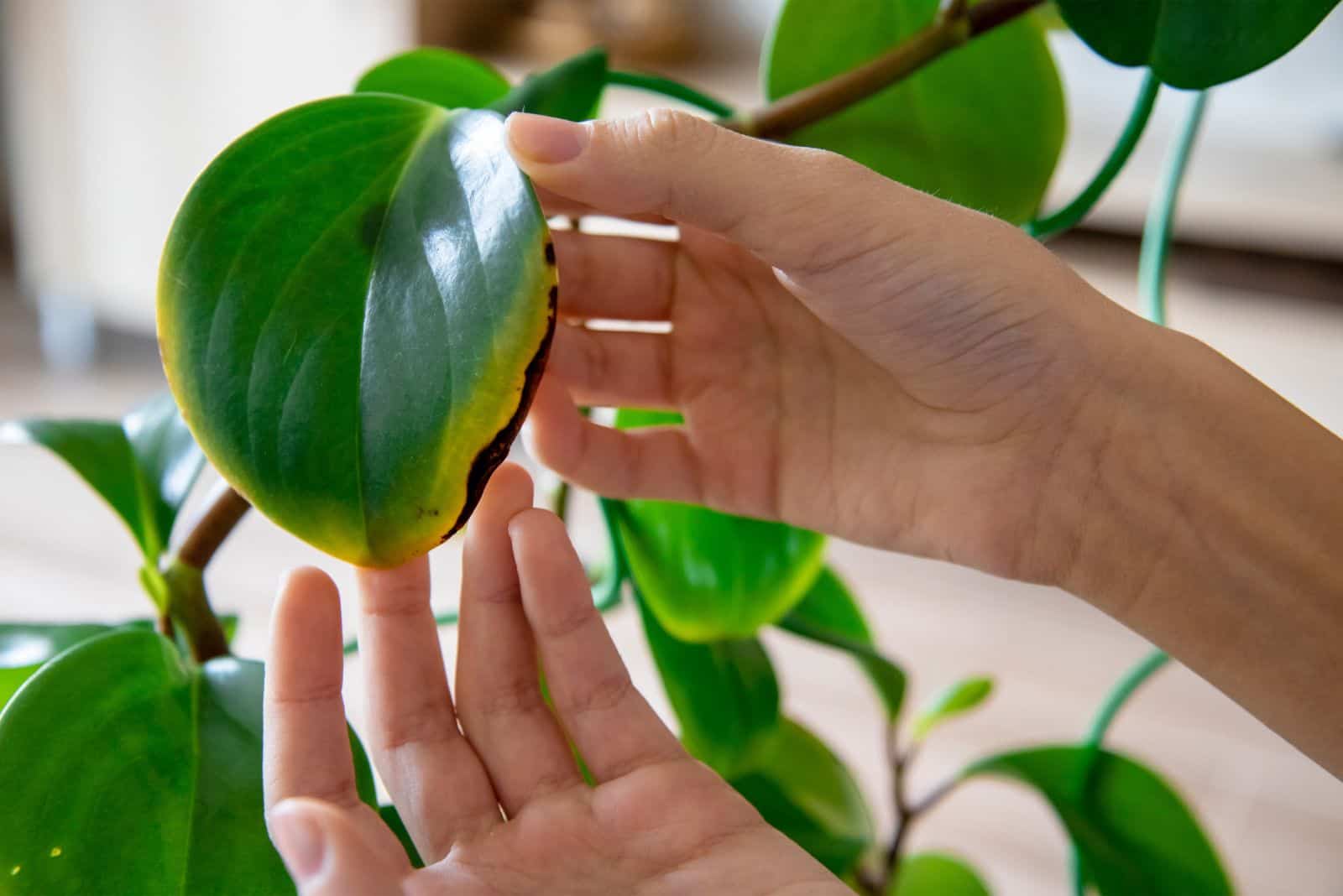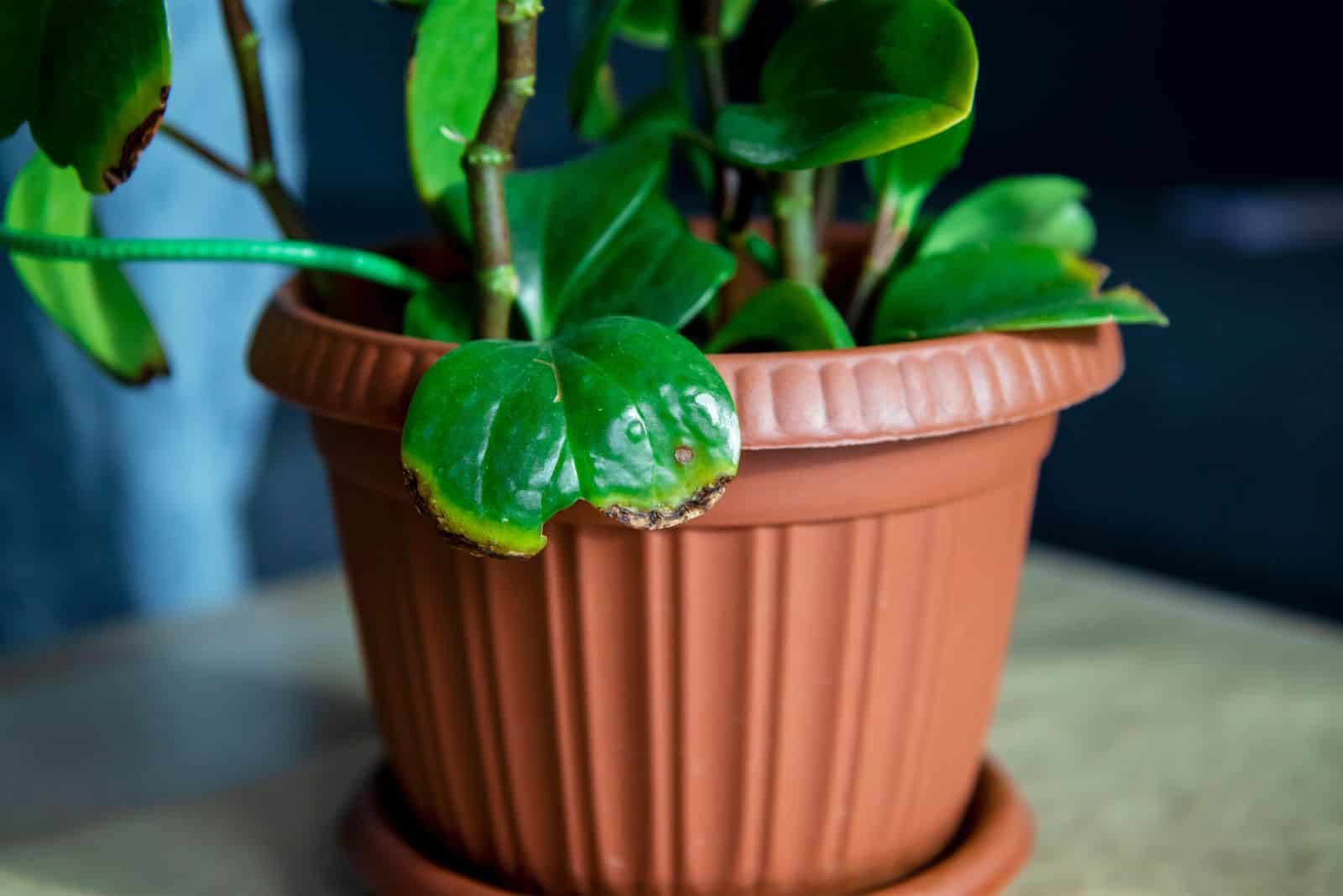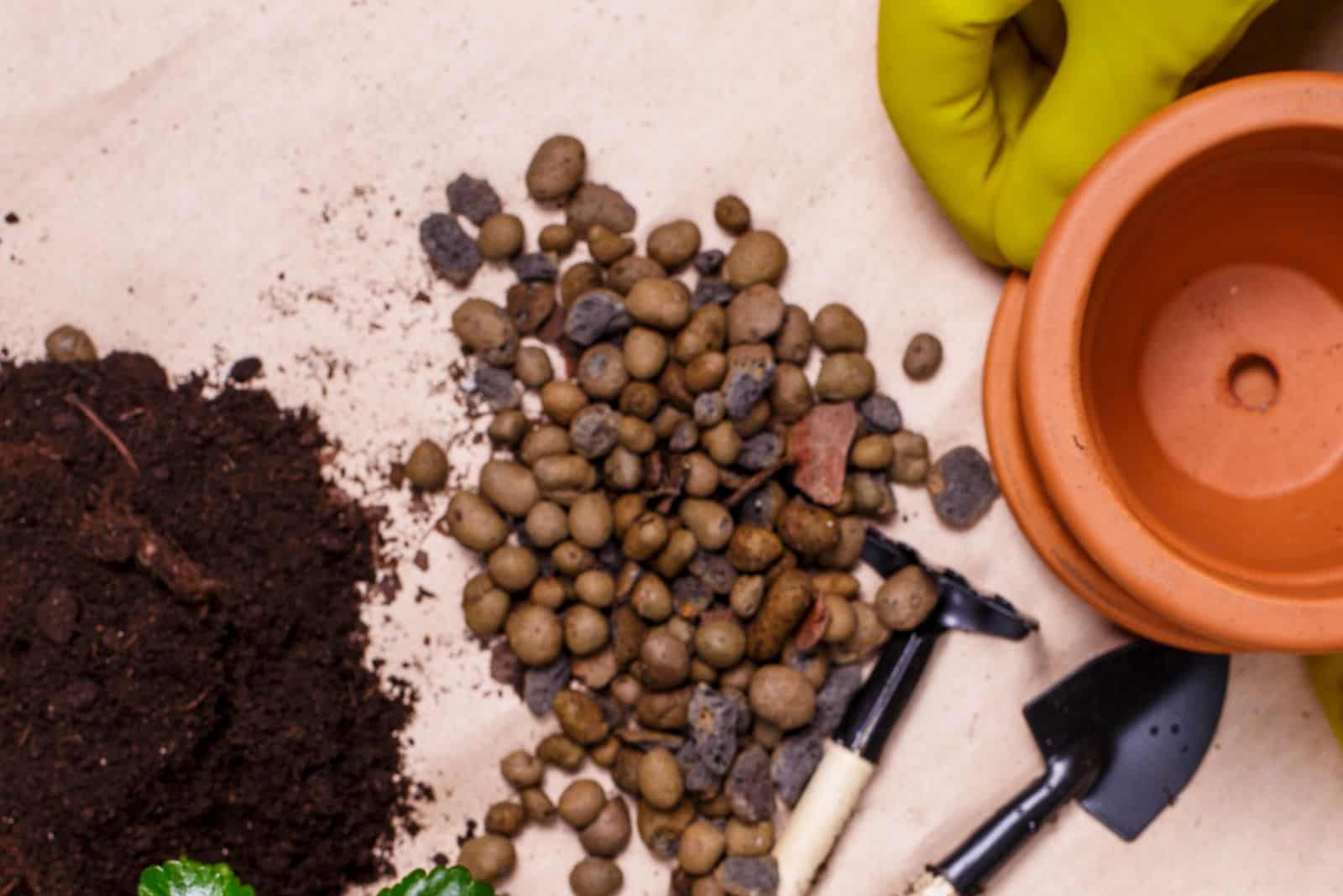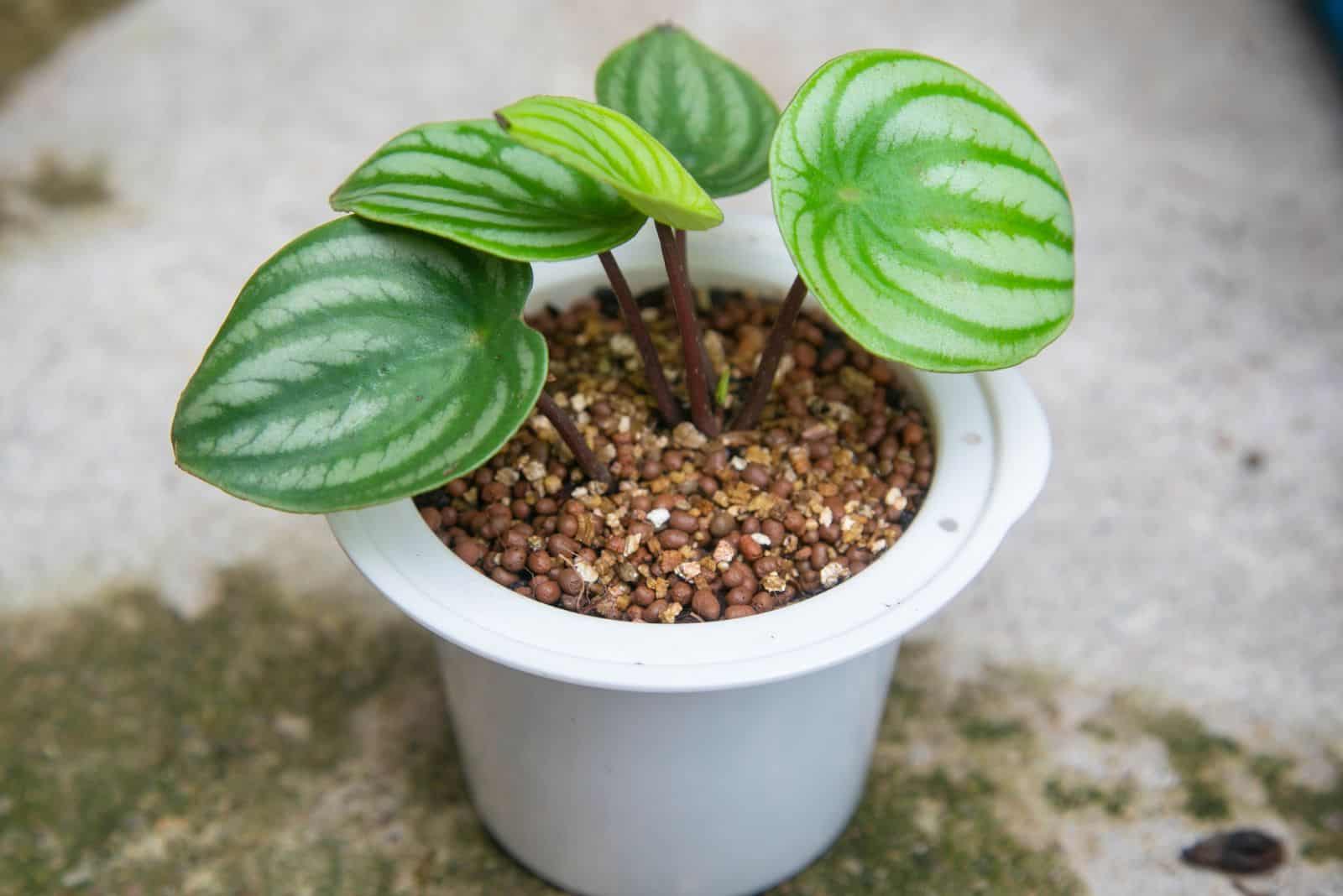When we start growing plants, we don’t think much about issues that can occur. That’s actually a good thing since plant care is something you should enjoy doing.
However, there’s no such thing as an entirely problem-free plant, no matter how great the growing conditions are. To encourage growth, we often add too much of something, which can have poor results.
Peperomias aren’t fussy when cultivated as houseplants, especially when it comes to watering. They have succulent features, so their watering needs are lower compared to other common indoor plants.
However, this might be the reason plant parents often deal with Peperomia root rot. So, in this article, I’ll tell you more about this condition, how to recognize it, what causes it, and how to fix it.
I’ll also show you how to prevent root rot in Peperomias so that it never happens again!
Let’s get started!
How To Identify Peperomia Root Rot
Before you start looking for the causes of root rot, you need to be sure that your Peperomia has this disease.
The most common signs of root rot in Radiator plants are:
• Yellow leaves
• Poor growth
• Mushy soil
• Foul odor
• Mushy and black/brown roots
• Drooping leaves
Let’s get into details!
Leaves Turning Yellow
If something is wrong with your Peperomia, you’ll first notice the changes on the leaves.
The problem often lies below the soil surface, but since we can’t see what’s going on there, the plant parts above the soil line can tell us.
If Peperomia leaves don’t get proper nutrition from the roots, they’ll most likely turn yellow.
If you notice yellowing, don’t immediately conclude your Peperomia has root rot since yellow leaves may also occur when your plant lacks light or you are using the wrong type of water.
You should look for other symptoms of this dangerous disease if you suspect your Radiator plant has it.
Drooping Leaves
Drooping foliage is the result of dehydration in most cases. If you forget to water your Peperomia plant, its leaves will most likely start to droop.
Drooping is completely normal sometimes; for instance, if you’ve relocated your Radiator plant it may display drooping leaves due to shock.
But if drooping occurs along with leaf and root discoloration and mushy soil, root rot is the culprit.
How come? Simply put, roots are suffocated, Peperomia leaves don’t receive water, and they droop as a result.
Poor Growth
Plants may display stunted growth for many reasons, so it’s not a good idea to make any conclusions before you inspect your Peperomia closely.
One of the reasons your Peperomia is growing slower or isn’t displaying new growth at all may be root rot.
Let’s see what else to inspect when looking for root rot.
Mushy Soil
One of the telltale signs of root rot in Radiator plants is mushy soil. If any plant species has this infection, the roots are severely injured and can’t uptake the water.
As a result, the water accumulates in the soil and they get mushy and dark.
It’s time to inspect the Peperomia roots!
Discolored And Deformed Roots
Root discoloration is never a good thing. Healthy roots aren’t chameleons and should never change their color if everything is fine with your Peperomia.
If Peperomia roots are healthy, they’ll be firm and typically a whitish color. If the plant suffers from root rot, the roots will be mushy and most likely turn brown or black.
If unsure, just touch the roots and the diseased ones will fall off.
Foul Odor
For me, one of the worst things about root rot is that it changes the smell of your plant. Yes, you read that right. Peperomias don’t have any special fragrance, but it’s far from unpleasant.
In the case of a root rot infection, the growing substrate will smell terrible; the closest description is the smell of rotten fruit. The root system smells even worse since it’s the epicenter of the disease.
Causes Of Peperomia Root Rot?
If you conclude that your Radiator plant has root rot, it’s time to determine the reason so that you can fix the problem.
The most common causes of root rot in Radiator plants are:
• Overwatering
• Infection
• Size of the container
• Low temperature
• Poor drainage
• Poor care during dormancy
Let’s take a closer look!
Overwatering
The number 1 cause of root rot disease in all plant species (indoor and outdoor) is overwatering. If you water your Radiator plant more often than recommended, the water will accumulate in the growing substrate.
If you keep irrigating your Peperomia even if the soil is already wet, the roots will suffocate and start rotting.
Radiator plants are epiphytes, which means they absorb water and nutrients from the host plants in their natural environment. Since these plants have succulent features, they are more susceptible to overwatering and it will kill them sooner than other houseplants.
Infection
The question is: why is water accumulation in the growing substrate so dangerous? The short answer is Pythium.
What happens here is that excess water in the soil becomes the main target of the Pythium pathogen, which is the most frequent cause of root rot infection.
As soon as this pathogen starts spreading, it causes more damage and your Peperomia becomes weak sooner, which can result in death.
The problem is that pathogenic infections aren’t only dangerous for your Radiator plants; it can also spread pretty quickly to other species in your plant collection.
Inadequate Drainage
Free-draining soil will save you from many problems, especially overwatering. Of course, you can still overwater your Peperomia if the soil type is correct, but the chances are lower.
If you plant any Peperomia variety in a heavy soil type, it can end up getting root rot. The main reason is too much water retention because the roots simply can’t absorb that much.
Additionally, heavy and compact soils have poor aeration, so the roots don’t have enough oxygen to breathe.
Poor aeration + poor drainage = root rot.
Container Size
My first plants had lovely pots and I didn’t really think much about whether they were too small or too big, I just wanted them to be pretty. Taking into consideration that I knew nothing about plants in general, I forgive myself!
The size of the container plays an important role in Peperomia growth. If the roots don’t have enough space to develop further, your plant will display poor growth.
But too much soil around the roots is also a problem. Again, your Peperomia becomes more susceptible to overwatering. Excess soil retains excess water and the roots suffocate quickly.
Additionally, pot material can contribute to root rot; for instance, pots made of metal retain more water, so they enhance water accumulation.
Porous pots, such as those made of terracotta, are porous enough to prevent waterlogging in Peperomia soil.
Low Temperature
Peperomia ginny, Taco plants and all other Peperomias thrive in temperatures of around 75 degrees Fahrenheit.
Temperatures as low as 60 degrees Fahrenheit won’t damage your Radiator plant. The problem is when they drop below 55 degrees.
Low temperatures will decrease water evaporation in Peperomia soil, which means it will quickly accumulate; and we’ve seen where that leads!
Wrong Watering Schedule During Dormancy
Houseplants have different watering needs based on the season. For instance, Peperomias display new growth in spring and continue growing until fall.
They need to recover from so much growing, so they ‘fall asleep’, i.e., go dormant.
Peperomias need more water during the growing seasons because they spend a lot of energy on growth. Once they enter the hibernation stage, they don’t spend energy so they don’t need a lot of water.
If we water our Radiator plants during dormancy the same way we water them during the growing season, root rot is inevitable.
Let’s see how to fix the issue!
How To Save Your Peperomia From Root Rot
Don’t let root rot disease scare you! Yes, the battle will be tough and may take a while, but you can do it!
Let’s take a quick look at what to do:
• Prepare the tools for cutting and sterilization, as well as fresh soil mix
• Take your Radiator plant from the pot
• Remove any diseased/discolored roots
• Apply fungicide to the healthy roots
• Plant your Peperomia in new soil
Let’s discuss everything in more detail!
Prepare The Tools
Since you are dealing with diseased plant roots that can’t recover, you need to remove them.
First, you need to prepare something you’ll use for cutting; some gardeners use shears or pruners, but a pair of scissors and even a knife will do the job.
Check if the tool you selected is sharp enough because you don’t want to end up doing more damage. You now need something to clean the tools, which is the best way to prevent the disease from transferring to healthy parts of your Peperomia or your other plants.
Rubbing alcohol and bleach make excellent sanitizing solutions, and I’m sure you have some in your home.
Prepare The Correct Growing Substrate
You are aware by now how important the soil mix for Peperomias is. The perfect type of soil for Radiator plants is simple: well-draining and well-aerated!
Even though it may seem complicated to make a soil mix yourself, it’s easier than you think!
A standard all-purpose potting soil is suitable for Peperomias and available in all plant stores. Bear in mind that standard potting soil needs to be amended with free-draining and porous ingredients to enhance drainage.
Perlite, pumice, and orchid bark are your Peperomias best friends at this point. Add a handful of perlite and a handful of orchid bark to some potting soil, mix everything well, and voila; the perfect mix for Peperomias is ready!
Take Your Peperomia Plant Out Of Its Pot
Your Radiator plant needs to come out of its container. This is probably the trickiest part of root rot removal. Since the Peperomia is weak at this point, you can easily break it.
First, remove some topsoil from around the base of the plant, tilt the pot to one side, and let your Peperomia slide out.
It’s possible that some roots will fall off as soon as you touch the soil, but it shouldn’t worry you because these roots are already dead.
Now, loosen the soil around the roots gently to expose the entire root system. Using your fingers, inspect each root carefully.
Remove Damaged Roots
You need to remove all discolored and diseased Peperomia roots. Dip a knife or some scissors in a sanitizing solution and start cutting!
You should sanitize your tools after each cut; remember, the root system and the entire plant is weak so the infection can spread quickly.
Apply Fungicide To Healthy Roots
The best way to protect healthy Peperomia roots is by applying fungicide to the entire root system!
You never know if some fungus is still present so it’s better to play safe.
Remember that you are not doing this only for your Peperomia, but also for all your other indoor plants.
Transplant Your Peperomia To New Soil
Congrats! You’ve successfully removed the root rot from your Peperomia, and now it’s time to replant it in new soil and ensure it gets more nutrients to encourage further development.
If you are using the old pot, you need to disinfect it because Phytium may be still hiding somewhere. Bleach or rubbing alcohol will take care of it.
Add the growing substrate you prepared to the bottom of the container and put your Peperomia in it. Add more substrate until all the Radiator plant roots are covered.
Now let’s see where to put the Peperomia pot!
Ensure Enough Light
Light is another essential factor for healthy Peperomia growth. As mentioned, these plants are epiphytes and the dense foliage of their host plants protects them from direct sunlight.
When looking for a perfect spot for your freshly repotted Peperomia, aim for the one that receives bright indirect light.
This will ease the process of adjustment to new conditions.
Adjust Temperatures
We mentioned the effect of low temperatures on Peperomia soil. The plant will appreciate it if you keep the temperatures between 65 and 85 degrees Fahrenheit.
There’s one important thing to remember when it comes to Peperomia temperature tolerance; you should never expose this houseplant to sudden temperature changes.
Avoid putting your Peperomia near heating devices or drafty windows. Yes, it’s nickname is the “Radiator plant”, but it actually hates radiators!
Change Your Watering Habits
Since incorrect watering causes root rot in most cases, it’s time to discuss how and when to water your Peperomia plant.
Never irrigate your Radiator plant if you haven’t checked the soil moisture. Stick your finger in the growing substrate before irrigation and if the top 2-3 inches are dry, proceed. If not, check again in a day or two. When the top of the soil is dry, give your Peperomia a good soak.
This method gives the best results when it comes to plant irrigation. Temperature or humidity may be slightly lower or higher than recommended, but if you check moisture before irrigation, it won’t affect your Peperomia.
I highly recommend using rainwater for Radiator plants because they’re sensitive to chemicals present in tap water. If you can’t use this type of water, distilled will suffice.
How To Prevent Root Rot Disease In Peperomia
Peperomia plant care isn’t complicated and there are only a few things to pay attention to. Here is a summary of the growing conditions that will ensure the healthy growth of your Radiator plant:
• Plant/repot your Peperomia in a well-draining and porous soil mix in a terracotta pot.
• Put your Radiator plant in bright indirect light.
• Irrigate when the top two inches dry out and use rainwater if possible.
• Keep humidity levels around 50%.
• Feed your Peperomia with all-purpose fertilizer monthly during the growing season.
• Repot when roots start poking out of the Peperomia pot (through drainage holes).
Wrapping Up
We’ve seen that Peperomia root rot isn’t something too scary, but also that it should be taken seriously. The essential thing is to react as soon as you notice any changes in your Peperomia’s leaf color, growth rate, soil, and root color.
Radiator plants are really easy to maintain, and it becomes even easier when you figure out the watering schedule.
Follow our step-by-step instructions for root rot removal and use our care tips to avoid any problems with your Peperomia in the future.
Until next time!

